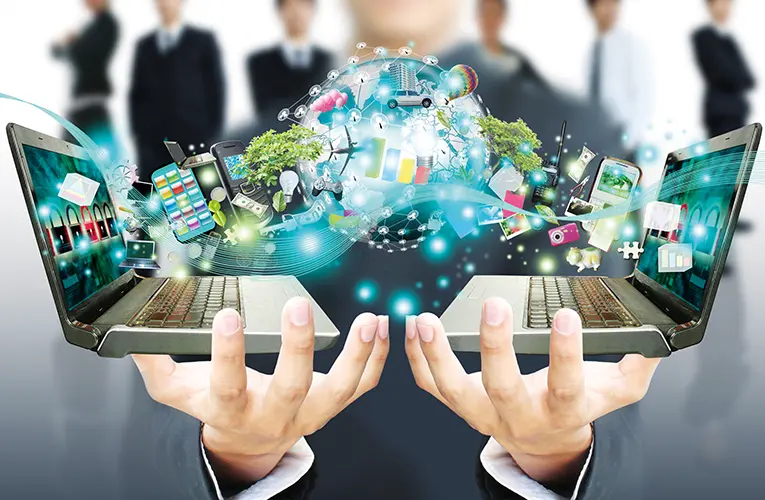“Tech Trends That Will Shape the Future”
### “Tech Trends That Will Shape the Future”
As technology continues to evolve at a rapid pace, it shapes how we live, work, and interact. Understanding the emerging tech trends is crucial for staying ahead in an increasingly digital world. This guide explores the key technology trends expected to shape the future, offering insights into their potential impact and applications.
—
### 1. Artificial Intelligence and Machine Learning
#### **1.1 AI and ML Overview**
– **Artificial Intelligence (AI):** Refers to machines designed to perform tasks that typically require human intelligence, such as recognizing speech, making decisions, and translating languages.
– **Machine Learning (ML):** A subset of AI where algorithms improve their performance through experience and data.
#### **1.2 Current Trends**
– **Generative AI:** Technologies like GPT-4 and DALL-E that can generate text, images, and other media from prompts.
– **AI in Healthcare:** AI applications in diagnostics, personalized medicine, and drug discovery.
– **Automated Processes:** Use of AI for automating routine tasks in various industries, from finance to customer service.
#### **1.3 Future Impact**
– **Enhanced Automation:** Broader adoption of AI-driven automation in industries, leading to increased efficiency and cost savings.
– **AI Ethics:** Growing focus on ethical AI practices, including fairness, transparency, and accountability.
—
### 2. Quantum Computing
#### **2.1 Quantum Computing Overview**
– **Quantum Computers:** Utilize the principles of quantum mechanics to perform complex calculations much faster than classical computers.
#### **2.2 Current Trends**
– **Research and Development:** Significant advancements in quantum algorithms and hardware, with companies like IBM, Google, and Microsoft leading the charge.
– **Commercialization:** Growing interest in quantum computing applications for cryptography, optimization problems, and material science.
#### **2.3 Future Impact**
– **Breakthroughs in Problem-Solving:** Potential to solve problems that are currently intractable for classical computers, such as complex simulations and large-scale data analysis.
– **Cybersecurity Challenges:** Impact on current encryption methods and the need for new quantum-safe cryptography.
—
### 3. 5G and Beyond
#### **3.1 5G Overview**
– **5G Technology:** The fifth generation of mobile networks, offering significantly faster speeds, lower latency, and increased connectivity compared to previous generations.
#### **3.2 Current Trends**
– **Expanded Deployment:** Ongoing rollout of 5G infrastructure globally, enhancing connectivity in urban and rural areas.
– **Enhanced Applications:** Growth in applications such as smart cities, autonomous vehicles, and augmented reality (AR).
#### **3.3 Future Impact**
– **IoT Growth:** Accelerated development of the Internet of Things (IoT) with enhanced device connectivity and communication.
– **New Business Models:** Opportunities for innovative business models and services driven by high-speed, low-latency networks.
—
### 4. Augmented Reality (AR) and Virtual Reality (VR)
#### **4.1 AR and VR Overview**
– **Augmented Reality (AR):** Overlays digital information onto the real world through devices like smartphones and AR glasses.
– **Virtual Reality (VR):** Creates immersive digital environments that users can interact with using VR headsets.
#### **4.2 Current Trends**
– **AR in Retail and Gaming:** Enhanced shopping experiences with virtual try-ons and immersive gaming experiences.
– **VR in Training and Education:** Use of VR for simulations and interactive learning in fields such as medicine and aviation.
#### **4.3 Future Impact**
– **Enhanced User Experiences:** More immersive and interactive experiences in entertainment, education, and professional training.
– **Workplace Transformation:** Potential for remote collaboration and virtual meetings with improved realism and interactivity.
—
### 5. Blockchain and Decentralized Finance (DeFi)
#### **5.1 Blockchain Overview**
– **Blockchain Technology:** A decentralized ledger that records transactions across multiple computers, ensuring security and transparency.
#### **5.2 Current Trends**
– **Cryptocurrencies:** Continued growth and adoption of digital currencies like Bitcoin and Ethereum.
– **DeFi Applications:** Development of decentralized financial services, including lending, trading, and asset management.
#### **5.3 Future Impact**
– **Financial Disruption:** Potential to transform traditional financial systems and create new opportunities for peer-to-peer transactions and investment.
– **Regulatory Challenges:** Ongoing discussions around regulation and compliance for blockchain and cryptocurrency applications.
—
### 6. Biotechnology and Genomics
#### **6.1 Biotechnology Overview**
– **Biotechnology:** The use of biological systems and organisms to develop products and technologies for various applications.
#### **6.2 Current Trends**
– **Gene Editing:** Advances in CRISPR and other gene-editing technologies for treating genetic disorders and enhancing crops.
– **Personalized Medicine:** Growth in tailored treatments based on individual genetic profiles and health data.
#### **6.3 Future Impact**
– **Healthcare Innovation:** Potential for breakthroughs in disease treatment, prevention, and overall health management.
– **Ethical Considerations:** Discussions around the ethical implications of gene editing and biotechnological advancements.
—
### 7. Sustainability and Green Technology
#### **7.1 Green Technology Overview**
– **Sustainability Focus:** Technologies aimed at reducing environmental impact and promoting sustainable practices.
#### **7.2 Current Trends**
– **Renewable Energy:** Advances in solar, wind, and other renewable energy sources.
– **Electric Vehicles (EVs):** Growth in electric and hybrid vehicles to reduce carbon emissions and dependence on fossil fuels.
#### **7.3 Future Impact**
– **Climate Change Mitigation:** Increased adoption of green technologies to address climate change and environmental challenges.
– **Circular Economy:** Emphasis on recycling, reuse, and sustainable production practices.
—
### 8. Robotics and Automation
#### **8.1 Robotics Overview**
– **Robotics:** The design and use of robots for tasks ranging from manufacturing to healthcare.
#### **8.2 Current Trends**
– **Industrial Automation:** Use of robots in manufacturing for tasks such as assembly, welding, and quality control.
– **Service Robots:** Development of robots for service industries, including healthcare assistants and customer service representatives.
#### **8.3 Future Impact**
– **Workplace Transformation:** Increased automation of routine tasks, leading to shifts in job roles and industry practices.
– **Enhanced Efficiency:** Potential for significant improvements in productivity and operational efficiency across various sectors.
—
### 9. Ethical Considerations and Challenges
#### **9.1 Data Privacy**
– **Concerns:** Ensuring the protection of personal data and maintaining user privacy amidst growing data collection and surveillance.
#### **9.2 Digital Divide**
– **Issue:** Addressing the gap between those with access to advanced technologies and those without, ensuring equitable technology distribution.
#### **9.3 Ethical AI**
– **Focus:** Developing fair, transparent, and accountable AI systems that avoid biases and respect ethical standards.
—
### 10. Conclusion
– **Summary:**
– The future of technology is marked by rapid advancements across AI, quantum computing, 5G, AR/VR, blockchain, biotechnology, green technology, and robotics. These trends are poised to transform industries, enhance everyday life, and present new opportunities and challenges.
– **Encouragement:**
– Stay informed about emerging technologies and their potential impacts. Embrace innovation while considering ethical and practical implications.
– **Call to Action:**
– Engage with and explore these tech trends to understand their potential and prepare for the future of technology.
—
This guide provides a comprehensive overview of the technology trends shaping the future. By understanding these trends, individuals and businesses can better navigate and leverage technological advancements for growth and innovation.









